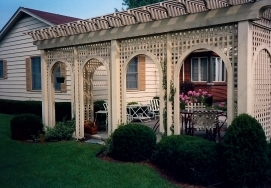THE ART OF LANDSCAPE AND GARDEN DESIGN
Garden design is thousands of years old and has taken many forms as it reflected and influenced various cultures. Contrast the formalism of 16th century Italian renaissance gardens, with their emphasis on order, beauty, symmetry, with 17th century English picturesque gardens that preferred realistic depiction of untamed nature instead of manicured trees, gardens, hills, and lakes.
 Landscape design combines aesthetic design skill with technical knowledge (including horticulture, topography, materials, and construction methods) to create beautiful, useful, safe, accessible, and enjoyable spaces.
Landscape design combines aesthetic design skill with technical knowledge (including horticulture, topography, materials, and construction methods) to create beautiful, useful, safe, accessible, and enjoyable spaces.
As paint and brushes are a painterís media, the Landscape Architectís media includes both natural elements (plantings, light, land, and water forms) and man-made elements (such as buildings and paving). The Art of Landscape Design involves an understanding of visual elements (including line, form, mass, color and proportions) as well as non-visual elements (textures, scents, and sounds, such as that of running water or rustling branches). These elements are combined not only in three dimensions, but also considering how they are influenced by time (throughout the day and seasonally) and experienced as one moves through the environment. Design elements are manipulated and combined to create a desired experience such as a contemplative garden, a celebratory outdoor kitchen, a raucous and safe childrenís play area, or a grand entrance to a formal estate.

Every project, no matter the size, deserves the attention of a well-conceived and thoughtful landscape design. A well-conceived landscape plan is at once artistic and responsive to clientís desires while creatively addressing architectural and site features. The art of landscape design is to combine all of these factors into a unified composition that is seamless, timeless, functional, and beautiful.

